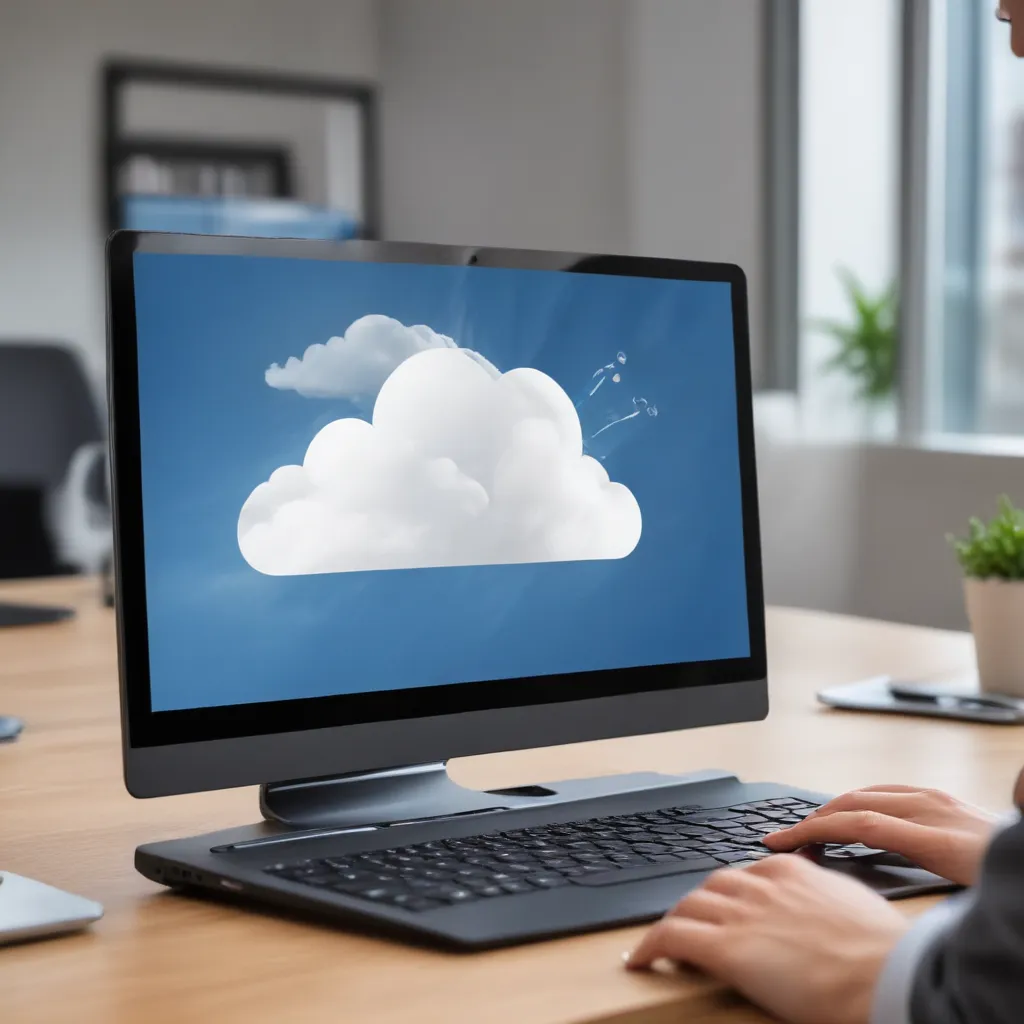As an IT consultant, I’ve seen my fair share of tech challenges – from outdated infrastructure to security nightmares. But one issue that really gets my circuits buzzing is the rise of BYOD (Bring Your Own Device) policies in the workplace. It’s like trying to herd cats, I tell ya!
The BYOD Dilemma
Picture this: you’ve got a non-profit organization where 100% of the workforce is remote. The management team, bless their hearts, decides to go the BYOD route to cut costs. No centralized IT department, just a bunch of home computers and personal devices logging into a cloud-based collaboration platform. [1] Sounds like a cybersecurity dumpster fire waiting to happen, am I right?
I mean, think about it – how can a random collection of laptops, tablets, and smartphones stand up to a sophisticated cyber attack? There’s no way to monitor what apps are installed, ensure OS updates, or even basic antivirus protection. [2] It’s like trying to build a fort out of cardboard and duct tape.
The Cloud to the Rescue
But fear not, my tech-savvy friends! That’s where cloud-based remote desktops come in to save the day. [3] These virtual workstations hosted in the cloud offer a secure, centralized solution that can work seamlessly with a BYOD environment.
Imagine your employees can access their work desktop from anywhere, on any device, without compromising sensitive data. The magic happens on the cloud provider’s secure servers, not Bob’s 10-year-old laptop running Windows 95. [4] Plus, with features like multi-factor authentication and enterprise-grade encryption, you can rest easy knowing your organization’s data is locked down tighter than a drum.
A Blend of Convenience and Security
But it’s not just about security, folks. Cloud-based remote desktops also bring a whole lot of convenience to the table. [5] Forget being chained to your desk – your employees can work from the comfort of their couch, a bustling coffee shop, or even a remote cabin in the woods (if they’re feeling particularly adventurous).
And let’s not forget about those unexpected disruptions, like weather emergencies or natural disasters. When the office is inaccessible, your team can simply log in to their virtual desktops and keep the wheels turning without missing a beat. [6] No more snow days, am I right?
Bridging the BYOD Gap
Now, I know what you’re thinking – “But Julie, won’t this virtual desktop thing come with its own set of challenges?” And you’d be absolutely right. [7] Integrating a BYOD policy with a cloud-based remote desktop solution requires a delicate balance of security, user experience, and personal privacy.
For starters, you’ve got to have a serious chat with the management team about the risks of relying solely on personal devices. While cloud-based remote desktops offer a secure solution, there’s still the question of legal liability if an employee’s personal device is subpoenaed. [4] Yikes, talk about a headache!
Striking the Right Balance
And then there’s the whole “Big Brother” conundrum. How much monitoring and control can you reasonably implement on an employee’s personal device without crossing the line and invading their privacy? [4] It’s a fine line to walk, my friends.
But fear not, I’ve got a plan. The key is to find a cloud-based remote desktop provider that offers enterprise-grade security features, without sacrificing the user experience. [8] Think seamless access, lightning-fast performance, and a UI that even your grandma could navigate.
The Future of BYOD
With the right tools and a well-thought-out strategy, BYOD and cloud-based remote desktops can be a match made in tech heaven. [6] Imagine a world where your employees can work from anywhere, on any device, without compromising security or productivity. It’s the kind of future that makes me want to do a little techno-dance.
So, if you’re ready to embrace the BYOD revolution and take your organization’s remote capabilities to the next level, get cozy with a cloud-based remote desktop solution. Your IT team (and your security-conscious heart) will thank you.
[1] https://www.reddit.com/r/AskNetsec/comments/109tj5k/endpoint_security_in_100_byod_organization/
[2] https://www.ncsc.gov.uk/collection/device-security-guidance/managing-deployed-devices/obsolete-products
[3] https://www.techradar.com/best/virtual-desktop-services
[4] https://community.spiceworks.com/t/byod-encryption-question-s/789393
[5] https://www.acecloudhosting.com/blog/what-is-byod/
[6] https://nvlpubs.nist.gov/nistpubs/specialpublications/nist.sp.800-46r2.pdf
[7] https://blog.centretechnologies.com/ways-to-use-virtual-desktop-vdi-desktop-as-a-service
[8] https://azure.microsoft.com/en-us/products/virtual-desktop













